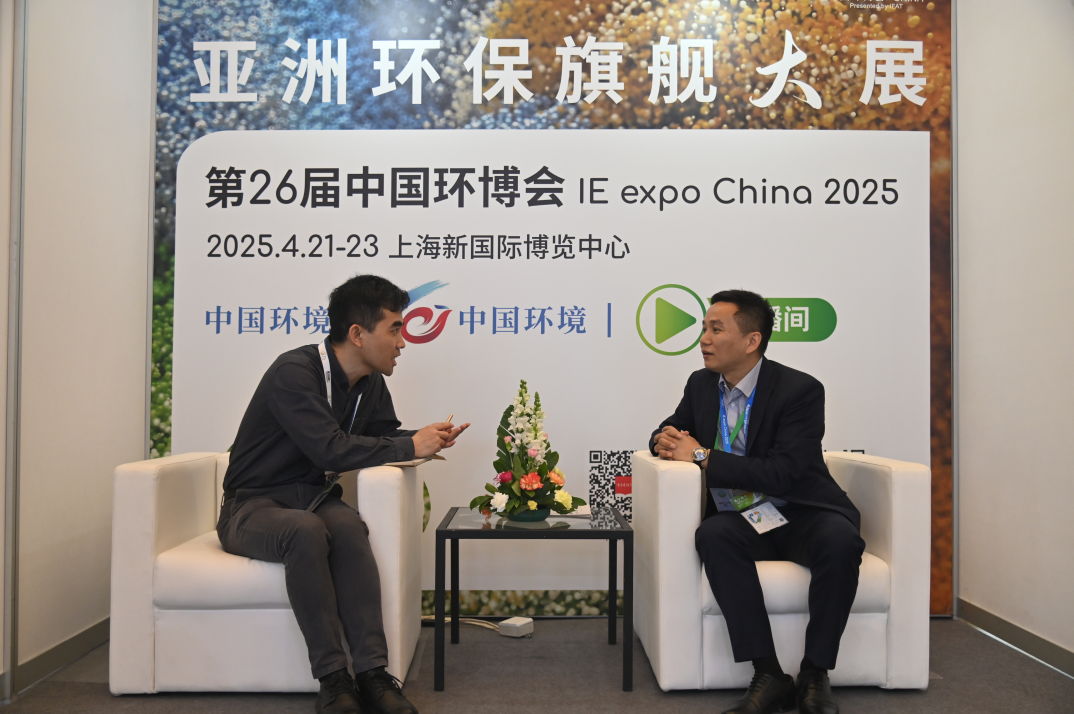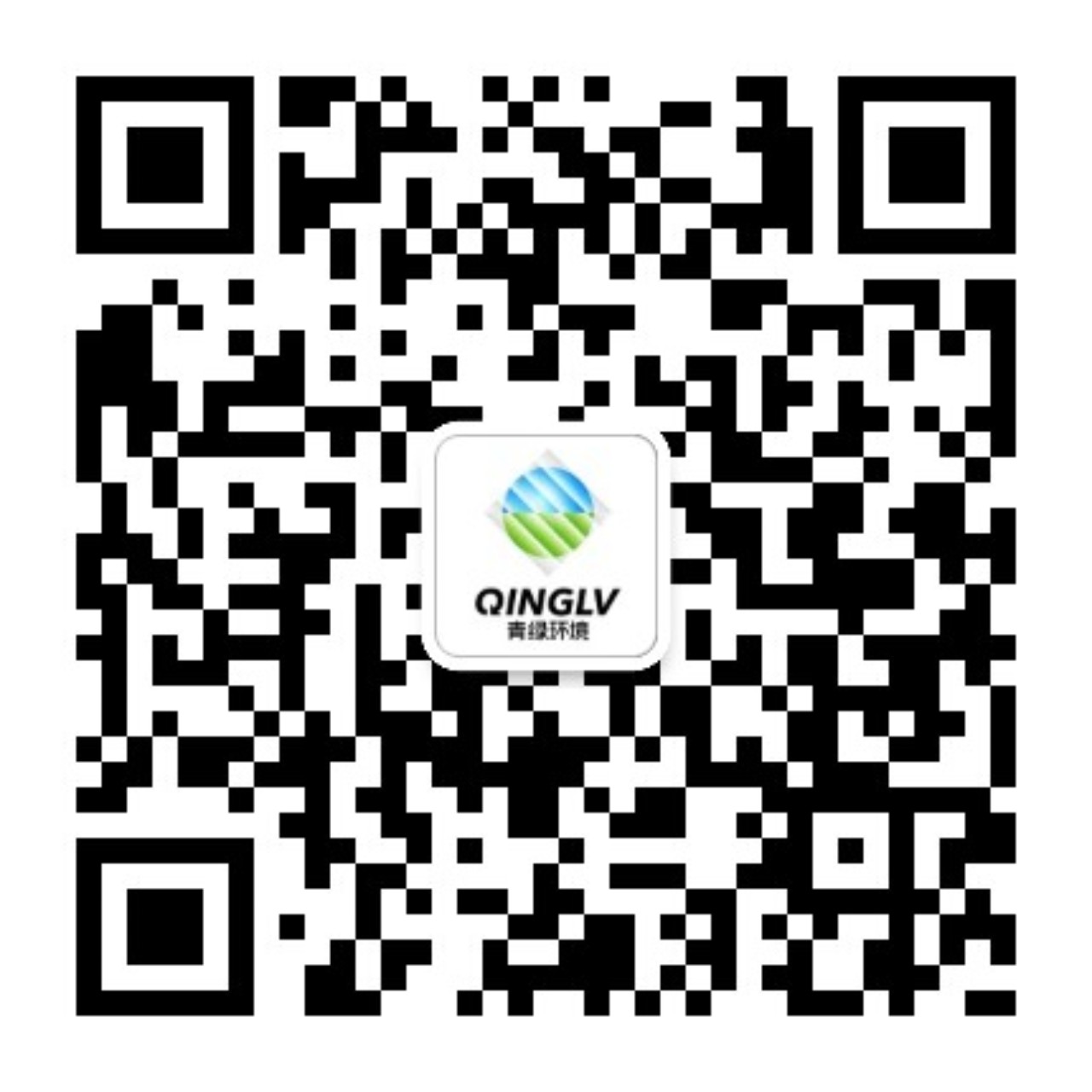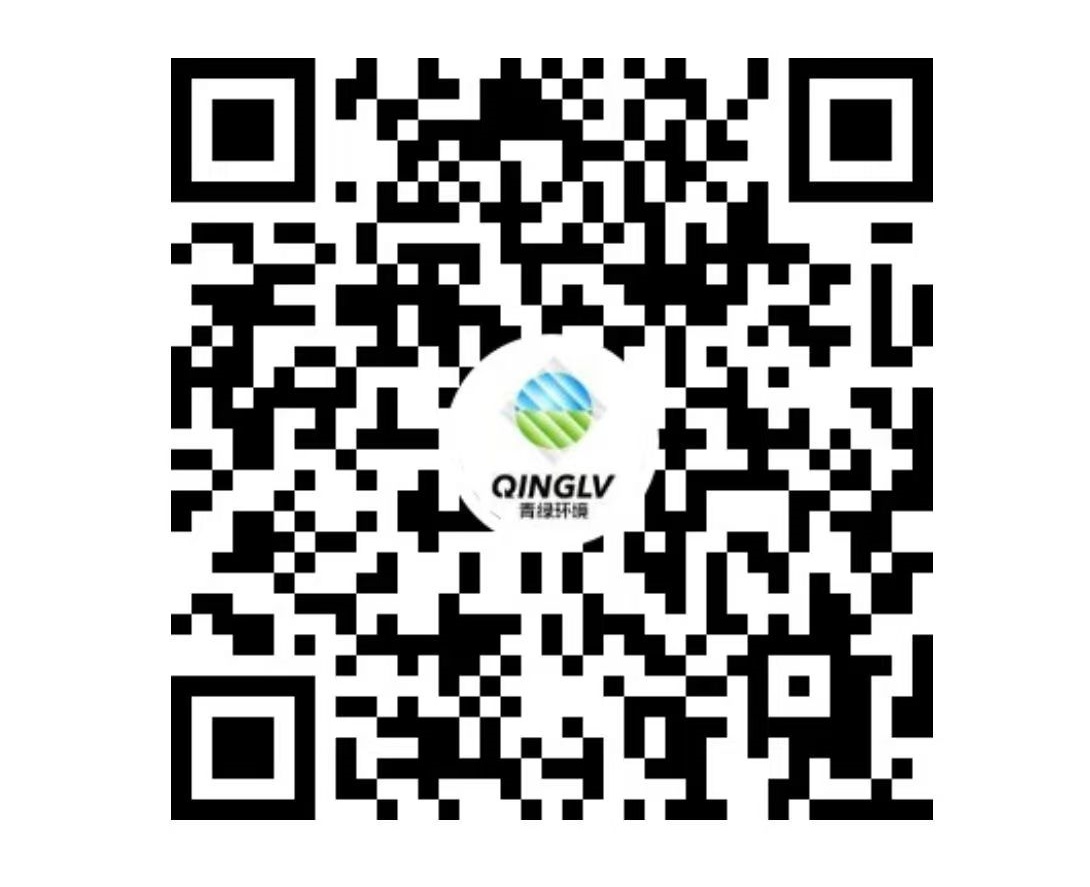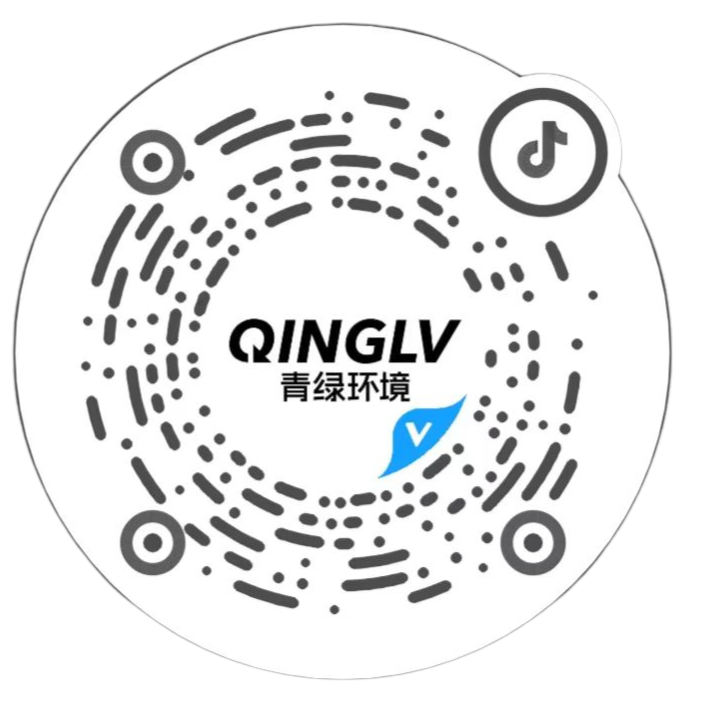 Time:2025-04-25
Time:2025-04-25
 Source:
Source:
Recently, the 26th China Eco Expo, Asia's flagship environmental protection exhibition, was opened in Shanghai New International Expo Centre, which is co-organised by the Chinese Society of Environmental Sciences, All-China Environmental Services Chamber of Commerce, Munich Expo Group and CMT Munich Exhibition (Shanghai) Co. During the meeting, Wu Jianyang, Chairman of Guangdong Qinglv Environmental Technology Co., Ltd. was interviewed by China Environment News.

China Environmental News: Your booth attracted a lot of visitors, as a company focusing on solid waste resource sorting market, what new and high tech equipments did you bring to the Shanghai Eco Expo?
Wu Jianyang: We have specially built a set of mini solid waste intelligent sorting demonstration production line in this exhibition, the core equipment includes a 3D sorting machine and two AI intelligent sorting robots. Visitors can intuitively understand how these devices can efficiently identify and accurately sort various types of recyclables, truly realising ‘streamlined equipment, high efficiency and low-carbon operation’.
Among them, the 3D sorter is the core of the sorting system, which can accurately sift mixed waste into lightweight 2D materials (such as plastic film and textiles), heavy 3D materials (such as stones, glass and hard plastics), and sub-screened fines (such as silt and sand) according to the shape, volume and specific gravity of the materials, with a daily processing capacity of more than 1,000 tonnes.
The AI intelligent sorting robots include two major types, AI photoelectric sorting and AI robotic arms, which adopt industry-leading AI composite recognition algorithms and can recognise more than 260 types of recyclables with an accuracy rate of 99%. In terms of sorting capacity, the AI photoelectric sorter can reach 10 tonnes/hour, and the AI robotic arm can achieve 5,400 sorting operations per hour, which improves the fine sorting capacity for the whole sorting production line.
What's more, our new generation production line has the advantages of high integration and low energy consumption. For example, the 3D sorting machine has a power of only 11kW, and with the AI robot, it can basically realise the whole line unattended. Each robot can replace 3 to 4 labourers, increasing sorting efficiency by more than 40%, while the purity of recyclables is increased by about 15%, significantly increasing the revenue from resource utilisation.
At present, Qinglv Environment has formed mature systematic solutions in six major fields, including construction and renovation waste, recyclables, mixed domestic waste, aged waste, industrial solid waste, paper mill waste, etc., which help customers achieve fine and efficient resource recovery and value transformation with lower equipment investment and less manpower consumption.
China Environment News: This year's government work report clearly puts forward the coordinated promotion of carbon reduction, pollution reduction and green growth. What do you think is the biggest pain point and difficulty in strengthening the level of waste recycling? What are the reasons?
Wu Jianyang: Waste recycling is a systematic project covering the complete chain from sorting and recovery at the front end to resource regeneration at the end. Truly sustainable development requires the economic viability of each step of the process, rather than relying solely on government subsidies.
One of the core challenges facing the industry is the large differences in the composition of domestic waste in different regions, resulting in poor adaptability of equipment in the application of the ground, processing efficiency and expected deviations, reflecting the current equipment in the face of complex and diverse waste, intelligence and flexibility still need to be strengthened.
At the same time, with the promotion of the ‘double carbon’ goal, many enterprises originally focusing on engineering and construction investment to enter the intelligent sorting track. However, intelligent sorting involves AI identification, control algorithms and equipment manufacturing depth of synergy, not overnight. Qinglv Environment laid out AI intelligent sorting as early as 2021, relying on years of front-line operational experience, focusing on creating intelligent systems that can adapt to the structure of waste in different regions, and has successfully landed high-precision production lines in a number of cities.
In addition, the solid waste recycling project is not only a technical project, but also has the attribute of ‘strong operation’. While the stability of the equipment is important, the key to success is whether the solution fits the local waste structure and recycling path, and whether it has long-term profitability. We always adhere to the systematic design concept of data-driven and operation-oriented, and work with all parties in the industry chain to promote the industry to upgrade from ‘equipment-oriented’ to ‘scenario-driven’.
At present, the investment cost of both Qinglv Environment's self-operated projects and customer projects is generally lower than the average level of the industry, while the resource yield is significantly ahead. Taking the construction and decoration waste sorting centre in Baiyun, Guangzhou as an example, the annual processing capacity of the 10,000 square metre site reaches 600,000 tons, and the project has achieved profitability in just half a year after commissioning without relying on additional subsidies. This type of environmental project not only improves the ecological environment, but also brings a healthy and sustainable business return to the operator.
China Environment News: Under the background of ‘double carbon’, what are the market opportunities for solid waste resource utilisation?
Wu Jianyang: The ‘dual-carbon’ goal has become a global consensus, and the value of solid waste recycling has become more and more prominent. Qinglv Environment has accumulated rich technical and operational experience in China, and has the ability to export total solutions to overseas markets, especially in Southeast Asia, the Middle East and South America, where the level of waste recycling is relatively weak, and there is a broad space for development.
We have been able to provide customers with one-stop turnkey services ranging from planning and consulting, equipment delivery to operation and hosting, helping customers to quickly set up low-threshold and high-efficiency resourcefulness systems. In the future, we will continue to strengthen independent research and development, enhance system intelligence and modularity, and promote the evolution of sorting systems towards higher standardisation, energy saving and automation.
Our goal is to make every project highly replicable and efficiently synergistic, so that solid waste sorting is seamlessly integrated with front-end recycling and back-end regeneration, and is sustainable, profitable and scalable, thus realising an evergreen industry and ecology.















 Prev
Prev